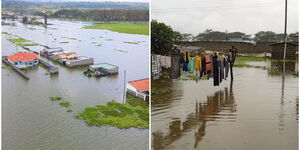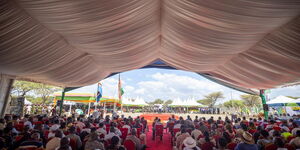As the government strives to make strides in the provision of health services to Kenyans, geographical limitations have always been a source of misery, deterring it from accomplishing its mission.
The slow development of infrastructure has hindered the government's effort to cater to the majority of Kenyans living in remote areas and has failed in meeting its goals in the sector.
In that light, a story of how a non-governmental organization is working to bridge that gap, by facilitating the movement of medication to remote areas has caught the attention of international media.
Conservationist Wanjiku Kinuthia and photographer Ami Vitale, who work for the Guardian, compiled a feature on an organization called Community Health Africa Trust(CHAT), started 16 years ago by Shanni Wreford-Smith, that uses camels to ferry trunks of medication and family planning products to Kenyans living in areas inaccessible by road.
CHAT Africa identified a gap in the health sector and worked to identify vulnerable communities with limited access to health facilities and significant family planning needs, and facilitated health provision and education to their door.
The organization experienced challenges in the provision of healthcare and ventured into the use of the pack animals as they are ideal for carrying heavy loads while traversing over long distances, ambling through thorny scrublands that are difficult to access by road.
According to Smith, the mobile clinic on hooves entails eight to ten camels, accompanied by a team of health workers and camel handlers.
The convoy embarks on its journey early in the morning to various destinations, and once they arrive, the convoy pitches tent near a manyatta (traditional Maasai house), and prepare to serve the public - with an average of eighty people visiting the mobile clinics.
This has proved beneficial to low-income families, as access to healthcare is expensive and, in an emergency, villagers are forced to walk for hours to the nearest health facility.
The mobile clinics help in alleviating the problem, as health workers are able to offer prompt medical assistance to the residents, especially to semi-nomadic communities that move in search of pasture and water.
The organization's efforts have proved successful as the access of the health facilities has significantly helped these communities with family planning sensitization empowering women and girls in these regions. The progress is evidenced by the drop in numbers of teenage pregnancies in remote areas such as Samburu, despite the spike in the country’s overall numbers.
The initiative has been recognized after a report revealed that more than half of the counties in the country have not been able to meet the recommended development spend threshold, which requires them to use at least 30 per cent of the money allocated to them for development projects, resulting in dilapidated infrastructure.












